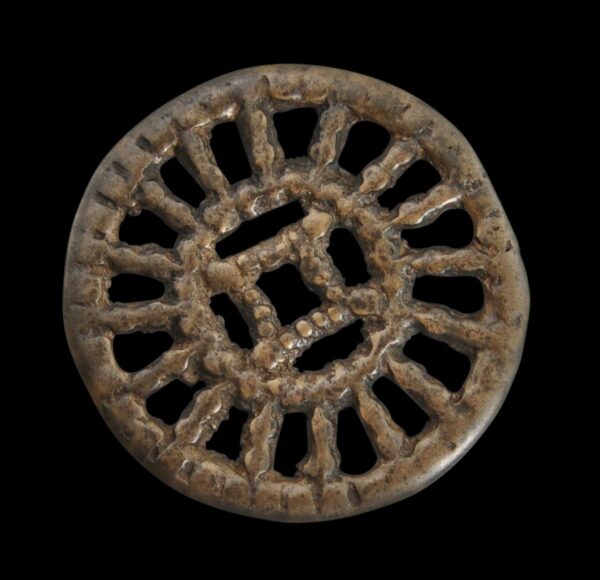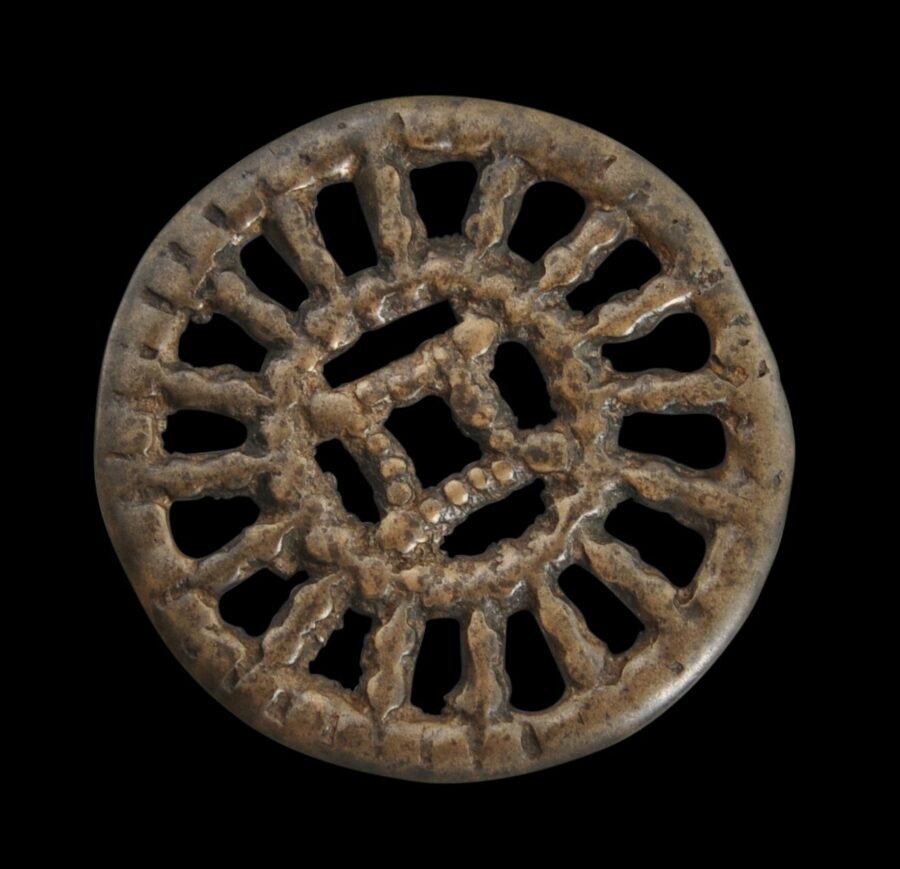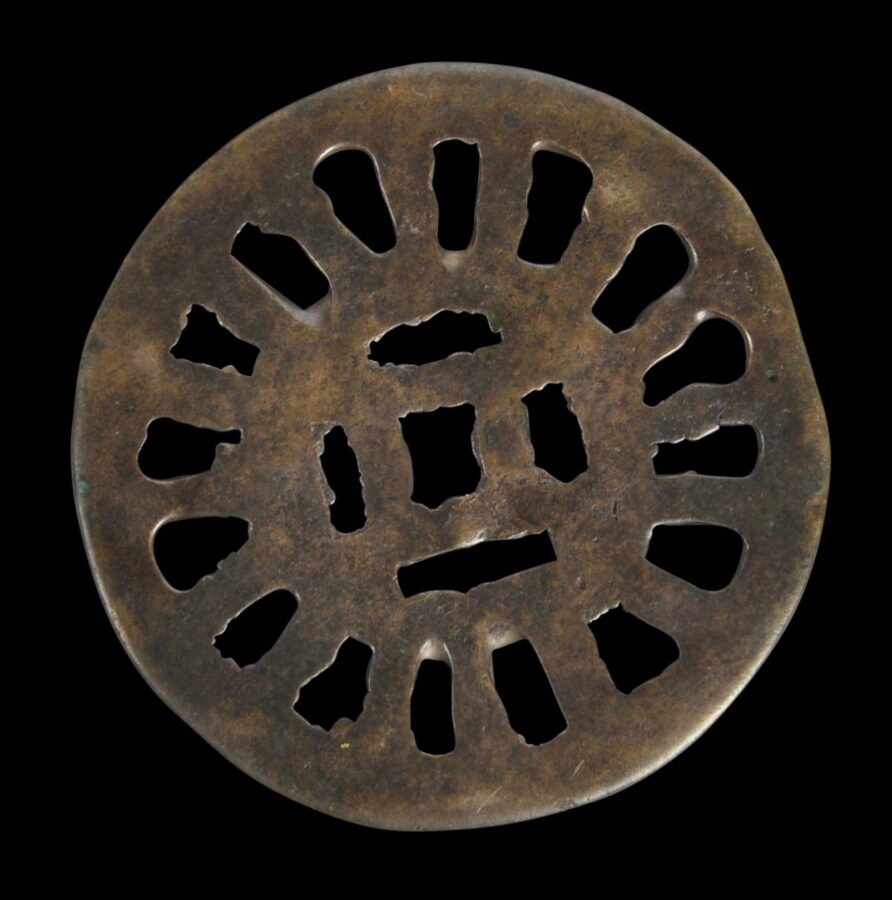This relatively large tokcha cast from bronze is in the shape of a mandala-like wheel with a square in the middle around which there are two circles with spokes. The tokcha has splendid age and wear, with rounded contours from handling. It has a very good ‘feel’ in the hand.
Tokchas (also spelt as thokcha, tokche, thogchak, thog-lcag, or thogchag) are small ‘found’ ancient, sacred objects that went on to serve as votive talismans, and which were valued for their magical properties. Usually they are of bronze or copper alloy. Many are believed to also contain some meteoric metal. Tibetans highly prized them and would wear them to protect them and to absorb evil. Usually they were hung from the neck or attached to clothing, but also were sewn onto amulet pouches or attached to religious articles. They were also used by Tibetan shamans – healers, spirit-mediums and magicians – as part of their ‘tools’ of trade.
Particularly effective or powerful tokchas would be sold on or passed down through the generations. Accordingly, genuine and powerful tokchas should show a great deal of wear, as in the case of the example here.
It is likely that many tokchas originally were belt fittings or ornaments either from Tibet or from the Eurasian Steppes and Central Asia or Persia, and were traded into Tibet along Silk Road trading routes. Others were purpose-made as talismans, which explains why some genuine tokchas can be very similar. The traditional belief however, was that tokchas were not made by humans and even that they had simply fallen from the sky. The animal motifs employed in many tokchas suggest a linkage to Tibet’s pre-Buddhist Bon past. (Buddhism was introduced to Tibet in the early 7th century.)
The example here has, as mentioned, great wear and visible age. Overall, this is a very fine, early item.
References
Bashkanov, M., M. Bashkanov, P. Petrov, & N. Serikoff, Arts from the Land of Timur: An Exhibition from a Scottish Private Collection, Sogdiana Books, 2012.
Brauen, M., et al., Mandala: Sacred Circle in Tibetan Buddhism, Arnoldsche/Rubin Museum of Art, 2009.
Debreczeny, C., et al, Rubin Museum of Art, Collection Highlights: The Rubin Museum of Art, New York, Rubin Museum, 2014.
Heller, A., Early Himalayan Art, Ashmolean Museum, 2008.
Reynolds, V. et al, From the Sacred Realm: Treasures of Tibetan Art from the Newark Museum, Prestel, 1999.




